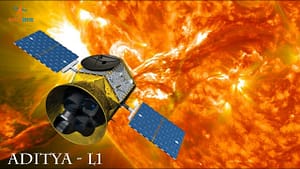Introduction
The pursuit of scientific knowledge knows no bounds, and human curiosity has driven us to explore the far reaches of space. India, a nation known for its ambitious space programs, has set its sights on the Sun with the remarkable ADITYA L1 mission. In this blog, we will delve into the fascinating world of ADITYA L1, India’s mission to study the Sun like never before. From its objectives to the technological marvels involved, we’ll explore every aspect of this ambitious endeavor.

-
Understanding ADITYA L1
ADITYA, an acronym for “Aditya-L1” (Aditya means Sun in Sanskrit), is an Indian space mission dedicated to studying our closest star, the Sun. Launched by the Indian Space Research Organization (ISRO), ADITYA L1 aims to unravel the mysteries of the Sun’s outermost layer, the solar corona, and enhance our understanding of solar processes that impact life on Earth.
-
The Significance of Solar Studies
Why study the Sun, you might wonder? The Sun is the primary source of energy that sustains life on Earth. Understanding the Sun’s behavior and its impact on our planet is crucial for a variety of reasons:
a. Space Weather Prediction: Solar activities, such as solar flares and coronal mass ejections, can disrupt satellite communications, power grids, and even aviation systems. By studying the Sun, we can better predict and prepare for such events.
b. Climate Studies: Solar irradiance variations contribute to changes in Earth’s climate. Accurate solar data is essential for climate change research.
c. Fundamental Research: Solar studies also contribute to our understanding of astrophysics, helping us comprehend the broader universe.
-
ADITYA L1’s Objectives
ADITYA L1 has several key objectives:
a. Study the Solar Corona: The mission aims to analyze the solar corona, focusing on its temperature distribution, dynamics, and magnetic fields.
b. Investigate Solar Activities: ADITYA L1 will monitor solar flares, their frequency, and intensity, helping in space weather prediction.
c. Measure Solar Irradiance: Accurate measurements of solar irradiance are essential for climate studies and understanding the Sun’s influence on Earth’s climate.
d. Space Weather Forecasting: The mission will improve our ability to predict space weather events and their impact on Earth.
-
Technological Marvels of ADITYA L1
ADITYA L1 is equipped with cutting-edge technology and instruments to achieve its scientific goals:
a. Visible Emission Line Coronagraph (VELC): VELC will capture images of the solar corona in various wavelengths, helping scientists understand its temperature and density variations.
b. Solar Ultraviolet Imaging Telescope (SUIT): SUIT will study the Sun’s chromosphere and transition region, providing valuable data on the Sun’s dynamics.
c. Solar X-ray Monitor (XSM): XSM will monitor solar X-ray emissions, aiding in the study of solar flares and their impact on space weather.
d. Aditya Solar Wind Particle Experiment (ASPEX): ASPEX will analyze the properties of solar wind, shedding light on its composition and behavior.
-
ADITYA L1’s International Collaborations
ADITYA L1 is a testament to international collaboration in space exploration. It benefits from collaborations with leading space agencies and organizations, enhancing the mission’s capabilities and scope. Collaboration with the European Space Agency (ESA) and the Max Planck Institute for Solar System Research in Germany has led to the inclusion of critical instruments on board.
-
The Launch and Beyond
ADITYA L1 is set to be launched into space using the reliable PSLV-XL (Polar Satellite Launch Vehicle) rocket. Once in its designated orbit around the L1 Lagrange point, ADITYA L1 will start its mission, providing crucial data for scientists and researchers across the globe.
The mission is expected to have a duration of five years, during which it will transmit a wealth of data about the Sun and its activities. This data will undoubtedly lead to breakthroughs in our understanding of the Sun’s influence on Earth and its role in shaping the universe.
-
Conclusion
ADITYA L1 represents India’s relentless pursuit of scientific knowledge and its commitment to pushing the boundaries of space exploration. By focusing on our nearest star, the Sun, this mission will not only enhance our understanding of solar processes but also contribute to the well-being of life on Earth by improving space weather prediction.
As we eagerly await the launch and the subsequent data transmission from ADITYA L1, it’s clear that this mission is a shining example of India’s prowess in space technology and its dedication to advancing our understanding of the cosmos.
With ADITYA L1, India is indeed reaching for the stars, or in this case, the Sun, and taking humanity one step closer to unraveling the mysteries of the universe. Stay tuned for more updates as we embark on this exciting journey of solar exploration.



